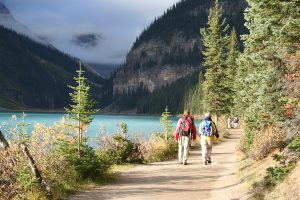Guest Blog: Top 5 Indoor Games for Senior Citizens to Play
Playing games with older relatives is a great way to keep older family members.
- Engaged
- Alarm
- Concentrate
Also, while building muscles, it showed them a good time!
For the elderly, playing fun, low-impact brain games may be a good way to stay sharp and alert at all times. Research has shown that older adults who often stimulate their brains through active, educational activities tend to score higher on memory and cognitive tests than those who do not participate in sports.
Clear the board game on the top of the cabinet and use it. Indoor games may be one of the best ways to keep the elderly mentally healthy and active. It does more than providing entertainment. Chess is an amazing game to play, and the best chess learning rules seem simple and easy to learn, but the skills involved are huge and bring many health and psychological benefits. It can make your mind young, active, and entertaining at the same time.
We have compiled 5 top memory games for adults: Here are five indoor activities for the elderly, which are sure to make you spend a pleasant day.
- Complete a Puzzle
- Play Board and Card Games
- Chess and Checkers
- Card Games
- Sudoku
Complete a Puzzle:
Word games for the elderly, such as crossword puzzles, can help maintain a memory. The challenge of the puzzle helps the brain to form and maintain connections. Crosswords involve the left and right sides of the brain. Older adults’ word games also require logical reasoning. Crossword puzzles can also help,
- Older people learn new words
- Recall vocabulary
Playing crosswords can promote,
- Relaxation, which can have a healing
- Calming effect, especially during a busy week
- Older people don’t have to complete the crossword puzzles alone! For families, this is a fun activity that can be done together, or it can be a bond for a group of older adults.
Play Board and Card Games:
Card games are a great way to think spontaneously, entertain and get along with others, and many games can be used by any number of players, from two to ten or more. Many seniors grew up playing card games, so be sure to ask them what games they like. Some seniors may prefer active and considerate games, such as bridge games or poker games. For others, playing simpler games such as,
- Blackjack
- War may be more fun
You can study other card games such as Uno that go beyond traditional game rules.
Chess and Checkers:
Chess is an amazing game. These rules seem simple and easy to understand, but the skills involved are huge. For decades, playing chess has been easy, and you can never really stop learning the subtleties of the game. Chess is about strategy, problem-solving, and footstep thinking. It is a great game for older people to participate and stay mentally active while having fun at the same time. Checkers is an improved version of the game, with fewer pieces and simpler rules, and a good choice. Is it better? The manufacturer’s chessboards and chessboards come in many different shapes and styles, including larger versions designed specifically for seniors with weaker vision and motor skills.
Card Games
Card games are a great way to think spontaneously, entertain and get along with others, and many games can be used by any number of players, from two to ten or more. Many seniors grew up playing card games, so be sure to ask them what games they like. Some seniors may prefer active and considerate games, such as bridge games or poker games. For others, playing simpler games (such as blackjack or war) may be more fun. Or, you can study other card games such as Uno that go beyond traditional game rules.
Sudoku
Sudoku is a popular pencil puzzle. It requires you to use problem-solving skills in a fun and easy-to-learn way. Sudoku can be used on almost any digital platform and traditional paper. Besides, you can play it online. Sudoku requires logic and memory skills, which can push the brain to establish connections. Strategic thinking can also help you improve your concentration and ability to make decisions in a short period. Besides, when you complete the puzzle correctly, there will be a sense of pride and achievement. Sudoku is not the only game that can help older people build memory.






